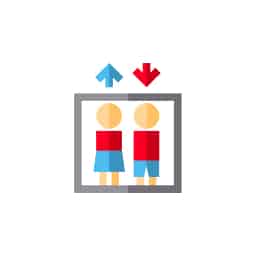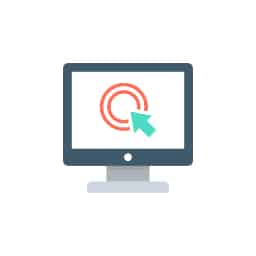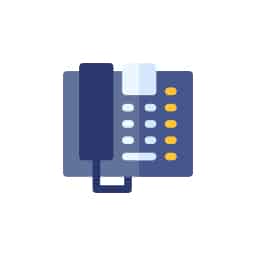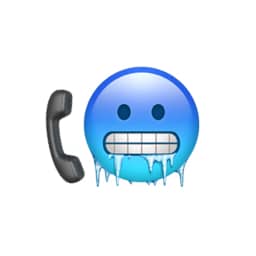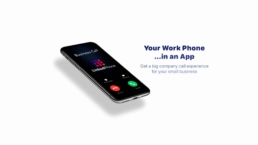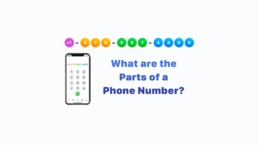How to Deal with Difficult Customers
What are some strategies for dealing with difficult customers?
- Don’t take it personally
- Remain calm
- Seek to understand the customer’s point of view
- Apologize
- Formulate a solution
- Say “thank you”
- Keep your promises
Being in business means you will likely deal with all types of people. As much as you’d like to believe that all of your customers will be easy to deal with, that isn’t always the case. Your customers have different personalities and preferences and no matter how hard you try, you can’t please everyone all the time.
Regardless of the reason that a customer is being difficult, it is a simple fact of business that you will have to successfully navigate sticky situations with consumers to resolve issues and gain their loyalty in the process.
LinkedPhone serves the small business community with local & toll-free business numbers that work with your cell phone, desk phone, & laptop. Add a 2nd phone number to your cell phone with our mobile app. Talk & text with clients on the go. Add team members too. Finally break free from the desk phone. At LinkedPhone, freedom rings! 🔔📱💻☎️
Why it’s important to know how to deal with difficult customers
No matter how great your product or service is, there will be times when you need to navigate unpleasant situations with customers. Working with happy, satisfied customers is easy. But handling difficult customers is one of the customer service challenges you must know how to manage when you have your own business.
How you deal with all of your customers directly impacts the quality of your customer service. Whether the quality of your customer service is considered good or bad by your customers can significantly influence the future of your business.
Remember that happy customers are more likely to buy from your business again and are willing to pay more than customers unfamiliar with your brand. Keeping existing customers helps you grow your business faster and be more profitable. This is partly due to the fact that acquiring new customers costs 6-7 times more than retaining existing ones.
Types of difficult customers
Challenging customers have a variety of characteristics. Some are difficult because it’s their nature to be demanding. Other reasons customers are difficult include having a bad day, being confused about your offering, or unable to make a decision. Regardless of the cause, it’s important that you and your staff can recognize each type of difficult customer and know how to successfully reach a satisfying resolution. Some types of difficult customers you may encounter include:

Angry or Irate Customers
An angry customer is not satisfied with the end result despite your best efforts to resolve the situation. Sometimes the source of their anger may not have anything to do with your product or service. It could be that they are having a bad day or they had a disagreement with their spouse, and are taking out their frustration on you.
Although an irate customer may raise their voice, it’s essential that you remain calm and keep your voice at a normal level or even soften it a bit when dealing with an angry customer. And when handling an irate customer, it’s important to remember that they don’t want explanations or excuses.
Making an angry person feel heard, instead, is how to de-escalate an angry customer. Listen carefully to their concerns or complaints. Display empathy and confirm understanding. Once they have aired their grievance and you have acknowledged it, they may often be ready to have a calmer discussion.

Dissatisfied or Critical Customers
Like an angry customer, the dissatisfied or critical customer may never be satisfied regardless of how you try to resolve their issues. They are quick to find fault with your products, services, or business in general and are eager to express their point of view.
The best way to deal with a dissatisfied or critical customer is to listen patiently to their complaints without moving too quickly to recommend a solution. Confirm that you understand their point of view before taking any action. Thank them for their feedback. Then, once they are calm, you can discuss potential ways to resolve the issue.
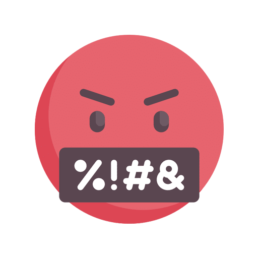
Rude Customers
A rude customer can be angry, aggressive, extremely critical, and/or arrogant. They are often verbally abusive, may scream and yell, and sometimes have a tendency to get physical by pushing and shoving to get what they want. Rude customers feel that their needs and requirements are more important than anyone else’s.
These bully customers don’t care about your explanations, so the best way of dealing with these difficult customers is calmly and confidently. If they are shouting or hurling verbal insults at you, do not try to compete with them.
The best way to handle someone like this is to treat them like a child having a tantrum. Simply let them get it off their chest, and when their tirade has ended, take the opportunity to apologize for their dissatisfaction, even if you don’t feel that an apology is warranted. Then work with them to identify an acceptable solution.
Taking the time and effort to successfully navigate these highly charged situations even has the possibility to convert rude customers to loyal, long-term ambassadors of your business.
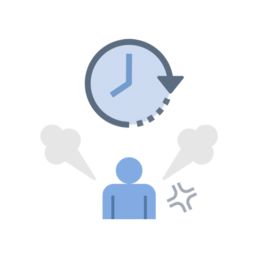
Impatient Customers
There are many reasons a customer may be impatient. A customer may have been waiting in line longer than expected and are frustrated because they were already running behind schedule. If the customer has been on hold longer than usual because your customer service department is short-staffed or has received an influx of calls unexpectedly, they may be impatient by the time their call is answered. Customers who request support via email may become impatient when they don’t receive a response in the time frame they expect. They may also become impatient when told a particular product or service isn’t available when they want it.
Regardless of the reason, dealing with an impatient customer requires a prompt response. Start by acknowledging the frustration, disappointment, or inconvenience caused by the delay. Then clearly explain the cause for the delay and seek to resolve the situation.
One way to prevent customers from becoming frustrated by delays is to proactively communicate the situation. If the customer is waiting in a physical line, have an associate communicate the delay to those waiting, so they can plan accordingly. For customers on hold waiting to speak with customer service, you can offer a pre-recorded customer message that communicates that wait times will be longer than usual and offer sincere apologies. And when it comes to email requests, set up an autoresponder email that acknowledges receipt of their request and sets expectations of response times so the customer knows when they should receive a reply to their inquiry.

Indecisive, Vague, or Confused Customers
Some customers have a difficult time deciding what to buy and how to proceed. These customers sometimes don’t even know what questions to ask at the onset making it difficult to know how to help them.
Oftentimes, the more information you give them, the more overwhelmed and confused they become. They wish to be completely certain that they are receiving the best price, quality, value, and features to satisfy their needs. And they are fearful of making a mistake. So they keep asking questions, comparing products, and weighing their options. It can be exhausting.
The best way to help indecisive, vague, confused customers is by asking them questions to identify what their priorities are such as price, quality, quantity, and features. Learn more about how they will be using the item they are trying to select. Listen carefully to their concerns and focus on their top priorities. Then, offering them an additional enticement, like a discount or add-on may help encourage them to make a final selection and purchase.
Strategies for handling difficult customers
You are certain to encounter dissatisfied customers in the course of doing business. The key is to know how to deal with angry customers and win them over as loyal brand advocates. Here are several strategies you can employ to successfully handle difficult customers.
1. Don’t Take It Personally
It’s human nature to become defensive when a customer is angry or displeased. But, remember that the customer isn’t upset with you, personally. In fact, they may be providing you with valuable information concerning what you can do to improve your business.
2. Remain Calm
Don’t raise your voice, argue with the customer or lose your cool. This certainly won’t help resolve the issue and may make it worse. Don’t allow rude or abusive comments or language ruffle your feathers. You’ll be in a better position to resolve the situation once the irate customer calms down.
3. Seek to understand the customer’s point of view
Practice active listening by allowing the upset customer to express their frustration or displeasure. Ask probing questions to gain a deeper understanding of the situation and how the customer feels. Then confirm understanding by repeating back to the customer what you believe they said. Once you’ve confirmed your understanding, demonstrate empathy and be sensitive to the customer’s position.
4. Apologize
Sincerely apologize for whatever is upsetting the customer, even if you don’t believe an apology is warranted. Remember, the customer is always right. And if they are unhappy, apologize for their displeasure and dissatisfaction. Doing so paves the way to resolution.
5. Formulate a Solution
Once you have apologized, the customer is calmed down, and you fully understand the source of the customer’s displeasure, it is time to consider the most appropriate way to resolve the issue. Remember the goal is to convert an unhappy customer into a satisfied customer. So, you may need to offer a few resolution options, especially when dealing with the most difficult of customers.
6. Say "Thank You"
When a customer takes the time to speak up and express their dissatisfaction, remember to thank them afterwards. The vast majority of unhappy customers tend to simply go away without a word. That is definitely what you do not want. It is far better for disgruntled customers to speak their minds and communicate with you instead. This allows you to identify areas where your business needs improvement so you can take action and continue to get better. So, thank angry customers for their feedback, at least once they’ve calmed down. What they are telling you may be more valuable than gold!
7. Keep Your Promises
Be sure to follow through on whatever commitments you make to resolve issues with difficult customers. For example, if you promised to follow up with them by phone within a designated period of time, do so. Or perhaps you offered to contact them as soon as the product they wanted is back in stock. Keeping your promises elevates your business in the eyes of your customers and increases trust.
Customer service training ideas
Implementing staff training is a great way for your employees to learn how to improve customer service skills. Teach them about each of the different types of difficult customers and the best way to defuse difficult situations with each of these challenging clients. Then teach them strategies for handling difficult customers in general as well as how to respond to customer complaints.
Then to reinforce the information you have taught your associates, provide them with handouts for easy reference. After they are familiar with the different types and how to handle difficult customers, it’s time to give your employees some practice. You don’t want them to practice their new skills on actual angry customers!
Role-playing is an excellent way to help your staff to develop their difficult customer service skills. Have employees take turns alternately playing the difficult customer and the calm associate. Practicing helps them more successfully navigate sticky customer situations when they arise.
Start dealing with difficult customers successfully
The way you deal with difficult or angry customers can have a huge impact on your ability to continue growing your business. Knowing the most common types of difficult customers and how to deal with them helps you recognize them and reach a successful resolution each time. Keep the strategies in mind when approaching each encounter with a difficult customer. Then teach your employees to identify difficult customer types and how to handle them, and help them understand why it’s an important customer service skill to master.
Make it easy for difficult customers to reach you to resolve their issues. Sign up for a 7-day free trial of LinkedPhone virtual business phone system and get started with business calling from any device today!
Business Growth Toolkit
Get the latest thought leadership insights on growing your business plus occasional LinkedPhone updates. We respect your inbox!
Small Business Resources
A special high five to Margot Howard for her outstanding research and contributions to this article. We love working with and supporting like-minded entrepreneurs who are passionate about business success strategies. Thank you Margot! ❤️
Get In Touch
We would love to hear from you.
Please contact us at any time with questions or feedback.







